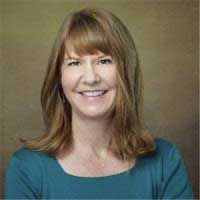A Policy Perspective: How NPs Expand Healthcare Access to Rural Areas
Find NP Schools
For the 2023-2024 academic year, we have 140 NP schools in our database and those that advertise with us are labeled “sponsor”. When you click on a sponsoring school or program, or fill out a form to request information from a sponsoring school, we may earn a commission. View our advertising disclosure for more details.
“The data have shown that primary care NPs, and NPs in general, are more likely to work in rural communities.”
Joanne Spetz, PhD, Director of the Philip R. Lee Institute for Health Policy Studies at UCSF
Approximately 46 million Americans live in rural areas, nearly 15 percent of the nation’s population. Those rural residents tend to be older and sicker than residents of urban areas, with higher rates of cigarette smoking, high blood pressure, and obesity. A lack of reliable healthcare access exacerbates the problem further.
Nurse practitioners (NPs) can expand healthcare access in rural areas. Research shows that NPs are more likely than their physician counterparts to practice in rural areas. Those trained in primary care and family care are particularly well-suited to meet rural residents’ complex and chronic healthcare needs. Various social and economic factors seem to reinforce NPs as a crucial element of addressing the rural healthcare crisis both now and in the future. Still, in some states, barriers to practice remain.
Read on to learn more about the intersection between NP practice and rural healthcare.
Meet the Expert: Joanne Spetz, PhD

Dr. Joanne Spetz is director of the Philip R. Lee Institute for Health Policy Studies at UCSF, where she is the Brenda and Jeffrey L. Kang Presidential Chair in Health Care Finance and a faculty member at Healthforce Center at UCSF. She is a professor with the UCSF School of Nursing’s Department of Family and Community Medicine. Her research focuses on the economics of the healthcare workforce.
Dr. Spetz directs the federally funded UCSF Health Workforce Research Center on Long-Term Care, which generates evidence to ensure an adequate workforce to provide patient-centered care to individuals with long-term care needs across their lifespans. She is an internationally known expert on the nursing workforce and leads studies of nurse supply, demand, education, earnings, and contributions to the quality of care across healthcare settings. She received her doctorate in economics from Stanford University after studying economics at the Massachusetts Institute of Technology.
Why NPs Are More Likely to Work in Rural Areas
“The data have shown that primary care NPs, and NPs in general, are more likely to work in rural communities,” Dr. Spetz says. “Part of that is related to their education pathways. It’s possible for a rural registered nurse, who might be working in a small hospital, to pursue their NP education partially remotely. Some of these programs also support the ability of a nurse to do their clinical preceptorship and rotations in their local community, which really supports retaining and growing a workforce within a rural community. That’s an educational pathway that does not exist for physicians.”
Several factors conspire to make it less likely that a physician will relocate to a rural area. Two reasons are time and geography: physician education generally takes place in urban areas and takes several years. That’s enough time for them to build strong personal and professional connections in an urban or suburban area. While some nursing students also go to urban areas to complete their NP education and training, it’s generally only for two to three years, compared to a physician’s seven.
“Once a person has made that commitment to be away from their home community for a certain number of years, there’s an increasing probability that they’re going to stay away,” Dr. Spetz says.
NPs are more likely to relocate to rural areas than their physician counterparts, and they’re also likely to find several benefits to staying there. Rural areas tend to offer more autonomy and more job satisfaction. The pay difference between rural and urban areas isn’t enormous for NPs. Still, the difference in the cost of living can be significant, meaning NPs effectively earn more purchasing power by working in a rural area. And while primary care opportunities might be hard to come by in dense urban areas where many physicians and NPs are being educated, rural areas are rich with job opportunities for NPs.
“From an economic standpoint, the quality of life and your earnings relative to your cost of living is quite good if you work in a rural community as an NP,” Dr. Spetz says. “There are a lot of factors that make rural practice attractive.”
Barriers to Practice for NPs in Rural Areas
Research has shown that NPs match or exceed their physician colleagues in providing quality care in primary care settings. Family NPs and primary care NPs are particularly adept at treating chronic conditions, which are prevalent in rural areas.
“Broadly defined, rural communities have much more challenging problems with respect to primary care shortages, and care in general,” Dr. Spetz says. “Because there have been more younger people moving out of rural communities, often in search of jobs, the care needs in rural communities are becoming more and more geriatric oriented. You really need to have care providers who are comfortable working across the lifespan.”
Unfortunately, some states maintain policies that prevent NPs from being as effective as they could be. The most common barrier to practice requires an NP to enter into what’s known as a supervisory or collaborative agreement with a physician. While these agreements tend to be neither supervisory nor collaborative in actual practice, their restrictions on an NP often have several deleterious effects on NPs and their patients.
In the most extreme examples, supervisory agreements can put geographic restrictions on NPs, requiring them to be within a specified distance of their supervising physician. Other agreements may necessitate a certain number of chart reviews per month. Most result in the NP paying a fee to the physician for their time and association, which, while not a predatory or punitive measure, may prevent an NP from setting up a practice in a rural area.
“In a rural community where there is a limited number of patients, and therefore a limited amount of revenue that an NP can get for their services, needing to make a payment to a supervisor on the margin may reduce an NP’s ability to break even in a rural community,” Dr. Spetz says.
Sometimes the supervisory or collaborative agreement is little more than a signature and association. But if a supervising physician dies, retires, or exits the agreement for any reason, the NP’s practice must halt, and their patients may not have a backup option. As a rural practitioner, the NP’s network of potential new supervising physicians is smaller than those in more densely populated areas, and finding a replacement takes time; potential supervising physicians may also be less inclined to enter into an agreement with an NP who is geographically far away, or who they don’t know personally.
Some states have moved to a transition-based model, where collaborative agreements are only needed for a few years. This approximates a physician residency, a mix of formal collaborative education and practice. But several states still require collaborative agreements for the duration of an NP’s career; many of those states also have desperate rural healthcare needs and dismal rural health outcomes.
“The reality is that NPs are professional clinicians,” Dr. Spetz says. “They collaborate and consult with other providers as any professional would. But the presumption that an NP with 20 years of experience should be supervised by a physician fresh out of residency — there’s no evidence that there’s any benefit to that. There’s no evidence that states that have those requirements have better patient outcomes or better patient safety.”
The Future of Rural Health
States can improve healthcare access in rural areas by better supporting their NPs. One such method of support is switching to full practice authority, which allows NPs to practice to the full extent of their training and education either immediately or after acquiring a certain level of experience.
Dr. Spetz’s research has found that NPs in full practice states are more likely to work in rural areas; that rural NPs are more likely to provide primary care in full practice states; and that people in states with full practice authority for NPs drive shorter distances to get care.
“In states like New Mexico, where there are huge rural areas, and where they’ve had full practice authority for over 25 years, you really see NPs fully embraced in practice,” Dr. Spetz says. “You don’t see a ton of distinction in how members of the community view their primary care provider. There’s a provider there, and that’s what matters to people. It’s not like they’ve solved all their rural access problems, but the whole ecosystem in New Mexico really supports rural care, and NPs play an essential role in that care. It’s not debated.”
Rural care will continue to be challenging. It’s a problem that researchers and policymakers have been trying to solve for decades—and still haven’t. But NPs will increasingly be part of a wider solution.
As of February 2023, 26 states have moved to some form of full practice authority. More will follow. Notably, no state that’s moved to full practice authority has reversed its decision. As more data becomes available, it points to the inevitability of NPs as an essential aspect of rural care.
“The trajectory is towards full practice authority,” Dr. Spetz says. “The evidence supports it.”

Matt Zbrog
WriterMatt Zbrog is a writer and researcher from Southern California, and he believes nurse practitioners (NP) are an indispensable component of America’s current and future healthcare workforce. Since 2018, he’s written extensively about the work and advocacy of NPs, with a particular focus on the rapid growth of specialization programs, residencies, fellowships, and professional organizations. As part of an ongoing series on state practice authority, he’s worked with NP leaders, educators, and advocates from across the country to elevate policy discussions that empower NPs. His articles have featured interviews with the leadership of the American Association of Nurse Practitioners (AANP), the National Association of Pediatric Nurse Practitioners (NAPNAP), and many other professional nursing associations.